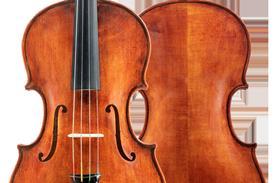- More from navigation items
- Home
- News
- For Subscribers
- Student Hub
- Playing Hub
- Podcast
- Lutherie
- Magazine
- Magazine archive
- Whether you're a player, maker, teacher or enthusiast, you'll find ideas and inspiration from leading artists, teachers and luthiers in our archive which features every issue published since January 2010 - available exclusively to subscribers. View the archive.
- Jobs
- Shop
- Directory
- Contact us
- Subscribe
- Competitions
- Reviews
- Debate
- Artists
- Accessories
Lutherie in Mexico: Adapting to Change

The history of stringed instrument making in Mexico is one of adaptability and innovation. Pablo Alfaro and Jaime G. González show how European arts and crafts were rapidly adopted by the indigenous people, and how the 20th century saw more creativity than ever
Stringed instruments have played a part in Mexican music and culture almost since the coming of the Europeans to the American continent. While the guitar might be seen as the quintessential stringed vehicle for Mexican music, violin-family instruments, and their derivatives, have had a huge role to play in the development of the country’s religious and secular activities, with all kinds of variations on the standard forms playing their part in the many different cultures of the nation.
Already subscribed? Please sign in
Subscribe to continue reading…
We’re delighted that you are enjoying our website. For a limited period, you can try an online subscription to The Strad completely free of charge.
* Issues and supplements are available as both print and digital editions. Online subscribers will only receive access to the digital versions.




























